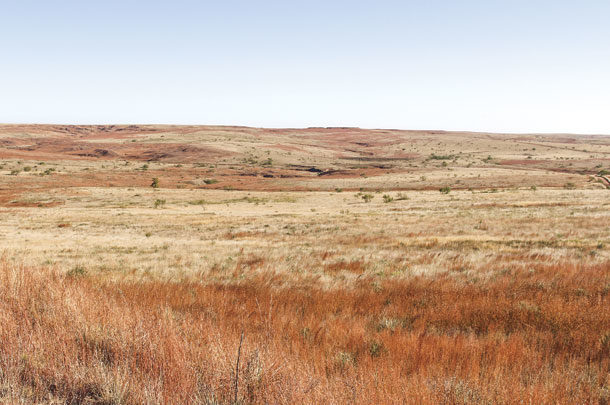—Ian Tyson, lyrics from “The Gift”
Tyson’s words describe legendary Western artist Charlie Russell. His works are admired, collected and awe-inspiring to people worldwide. And, like Charlie Russell, the very best stewards of the rangeland are artists.
In the range management world, the phrase “the art and science of range management” has been tossed around for years. Land managers might not have their work hanging in museums, but they are certainly important to society. Services like water to drink, open space to enjoy, carbon sequestered, food and fiber produced, and wildlife habitat maintained are enjoyed by all citizenry. But has the “art” of range management been overlooked?
The science has been explored pretty thoroughly over the years, with the conclusions and recommendations remaining much the same. H.L. Bentley, special agent in charge of the Grass Station in Abilene, Texas, in 1898, warned that overstocking and continuously grazing rangeland was quickly leading to degradation of rangeland and “exhaustion of the pasturage.” He even suggested such practices may have pushed range conditions past the point of recovery. That was in 1898.
For over 100 years, science has been sounding the alarm, calling for better land stewardship, identifying rotational grazing as key. Countless research has refined range science, defined grazing system and suggested various means and methods to graze rotationally. We have explored how to do these things quite thoroughly, but have we adequately explained the why? This is where the art of range management comes into play.
The art
Many people who make their living from rangelands do not have a simple, clear understanding of the relationship between land and animal. Scientists have been far too scientific with such explanations, reserving them for journal articles written in technical language, measurements in the metric system, probabilities and significant differences clearly defined. Not the sort of thing the general public or most ranchers bother to read.
So here’s the magic: When a grazing animal takes a bite of a grass plant, given that it is not overutilized, that grazing action stimulates tillering. New shoots develop, making the plant leafier and more robust. And here’s the cool part: More roots develop. The root zones, even around the tiny hair-like roots we cannot see, develop relationships with soil mycorhizzal fungi and other microbes.
These little dudes (and there are literally billions in a tablespoon of healthy soil) alter the soil in such a way the plant roots can utilize nutrients previously unavailable, thereby benefiting the grassland production and nutrient cycling. Some rangeland grasses are better at these processes than others. How cool is that? It all works together. Take away the grazing animal, and you have a stagnant grass plant in a stagnant soil. The system does not function.
Of course, it is possible to get much more scientific, but I am convinced most of the general public and the ranching community does not want or need the details. I believe we bury the magic in the details.
How a land steward gets to the goal of healthy soils and healthy rangeland is where the art comes into play. No two ranches are alike. They have different resources – everything from grazable acres available to water, fencing and infrastructure to labor and financial resources. It is frustrating to attend a workshop and be told by a speaker, “You need X number of pastures” or “You need to do this, that or the other thing.”
Well-meaning advice, to be sure, but if your water system will not support grouping your livestock into one herd, or you don’t have the fencing necessary to graze sheep or goats and utilize the forbs, the advice is as useless as weight loss advice by a TV celebrity. It is easy to walk away and just keep doing things as they have always been done, maybe for generations.
Scientists, consultants and technical advisers such as NRCS must be much more proactive in helping land stewards achieve healthy soils and productive rangeland ecosystems, but to do so requires the clear realization that each land steward has different tools to create the art. That land steward may need education and undoubtedly needs someone, not to tell him a canned solution but someone to work collaboratively and creatively to utilize the resources and tools available to create the art.
Science needs to reach out beyond journal articles ranchers do not read and realize there are many ways to achieve healthy soils and productive rangeland ecosystems. We are doing ranchers a disservice to suggest there is one answer, a single path to sound stewardship.
Beauty, like art, is in the eye of the beholder. Some of us like Charlie Russell’s works, while others prefer abstract or modern art. We each see the rangelands differently, and our path to achieve healthy soils and productive, profitable rangeland ecosystems must consider different solutions, different tools.
Texas Grazing Land Coalition has 10 regional coalitions across the state. Other states have similar organizations. Something as simple as ranchers coming together and exchanging ideas, comparing “what worked for me” is the most valuable educational tool available. ![]()
PHOTO: Some see this Gray County, Texas, rangeland as tall grass prairie showing off early fall colors. Others see the two mesas in the far background and know that one of the last Indian battles on the plains took place there in late November 1876 just before the Indians were forced onto Oklahoma reservations. Still others see the juvenile mesquite and the challenges it may bring in the future if ignored today. Beauty and challenges are unique, and no two artists of range management see the same picture. Photo by Jenny Pluhar.

-
Jenny Pluhar
- Executive Director
- Texas Grazing Land Coalition
- Email Jenny Pluhar









